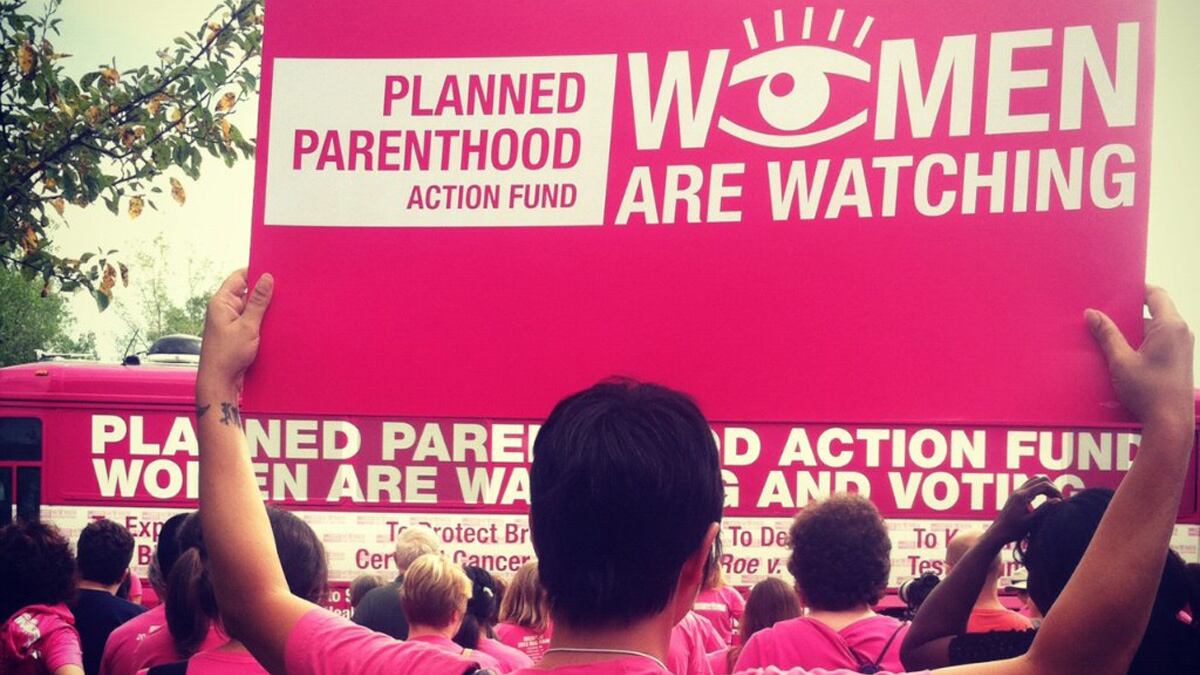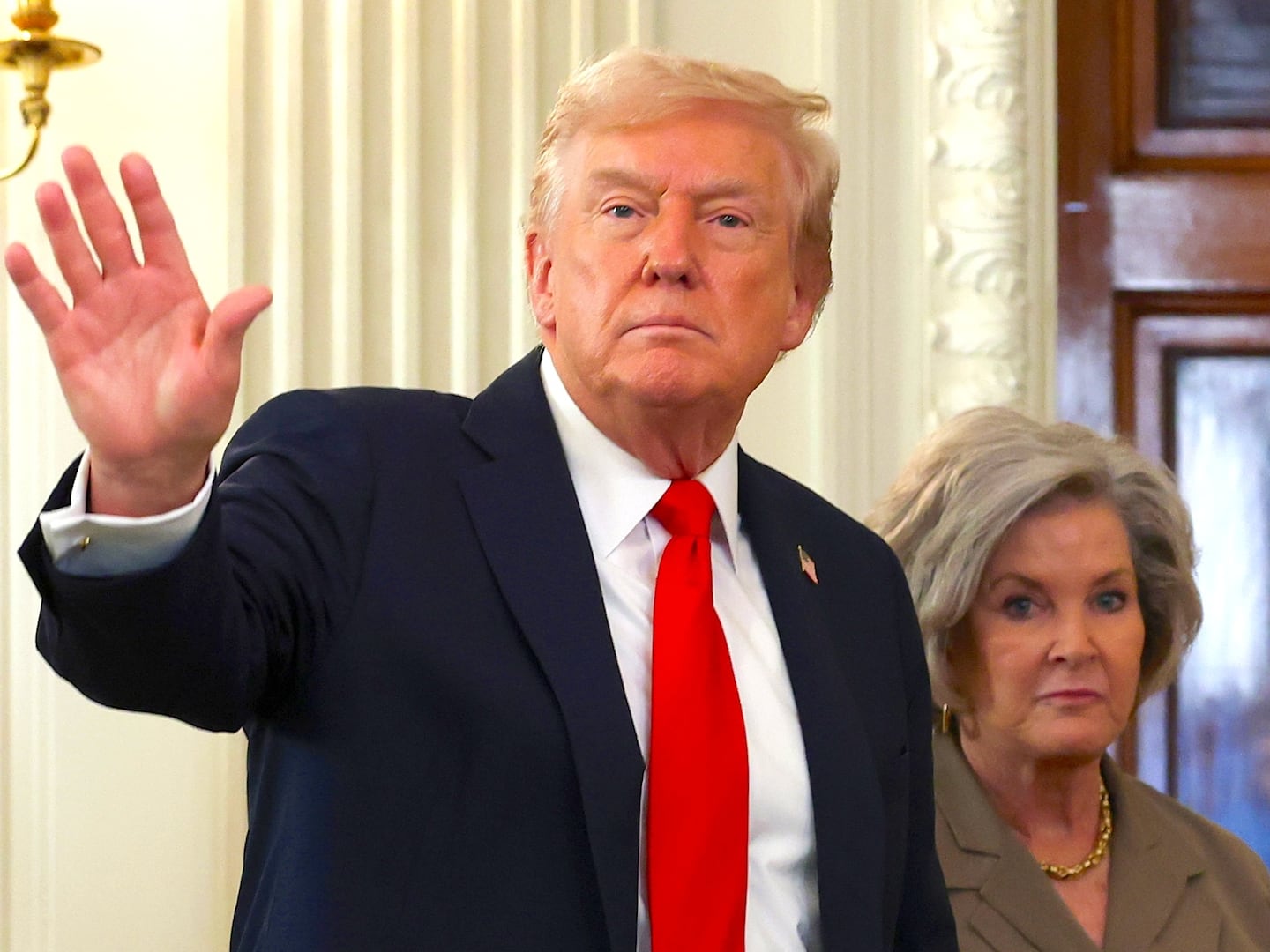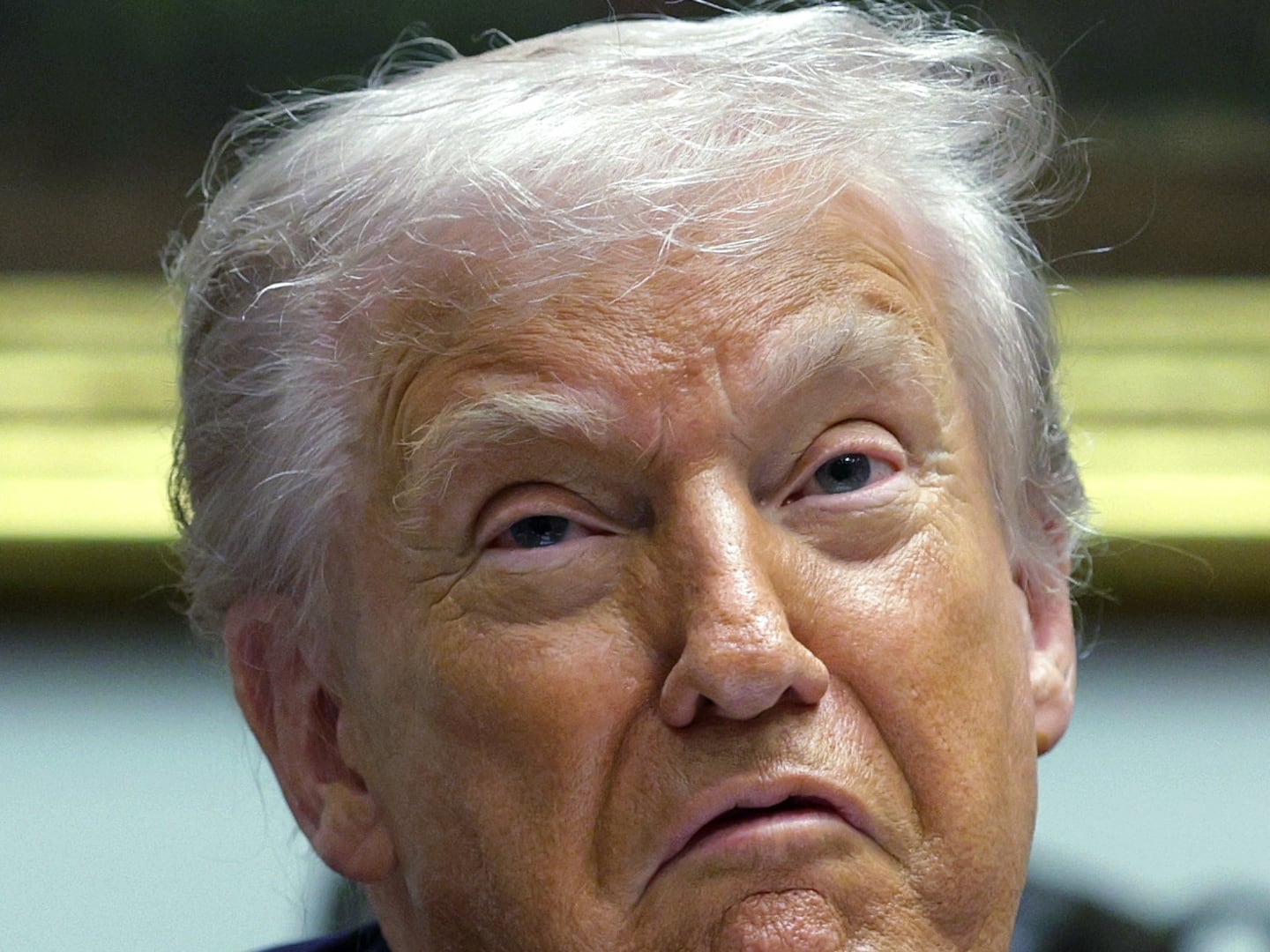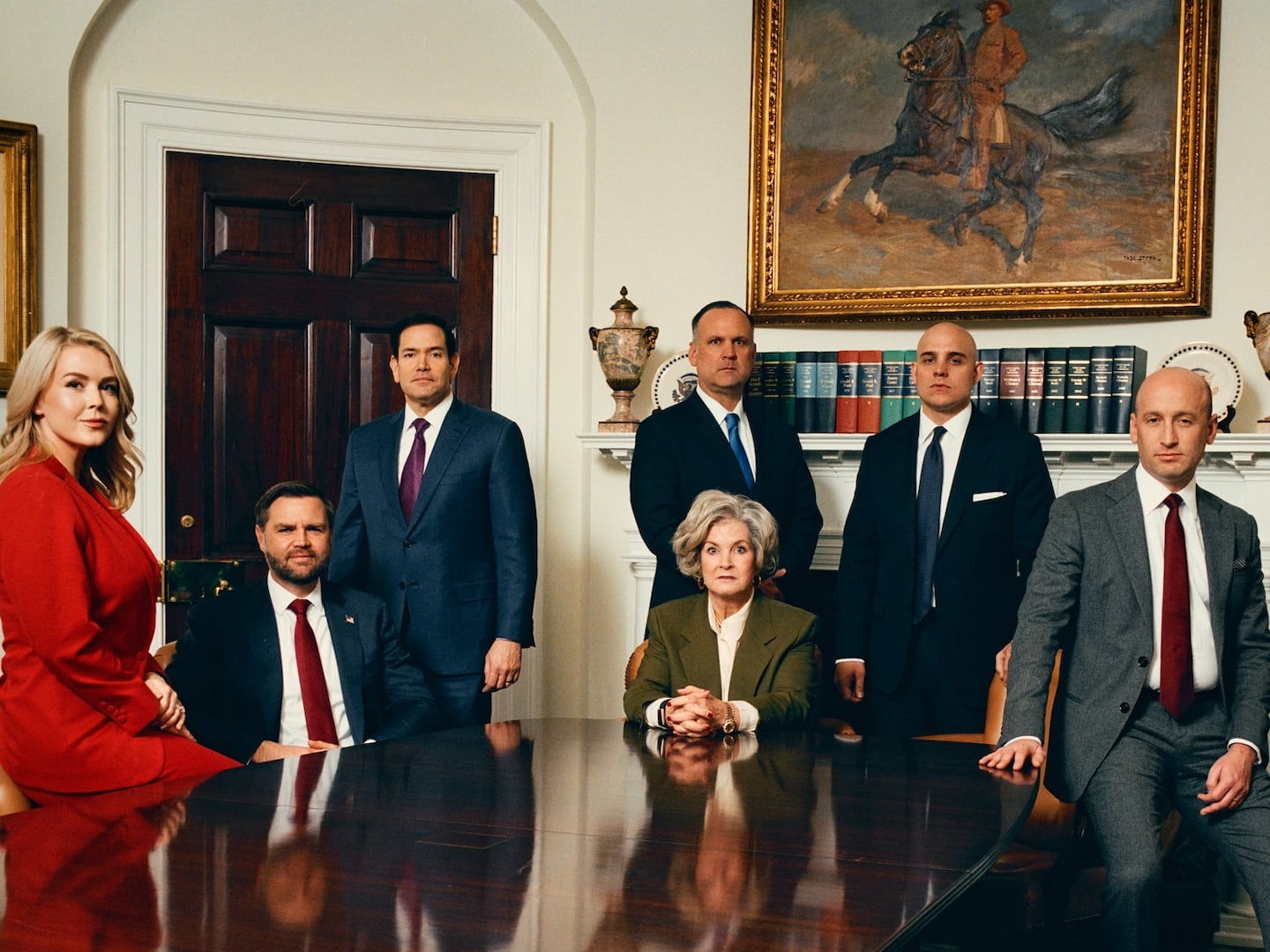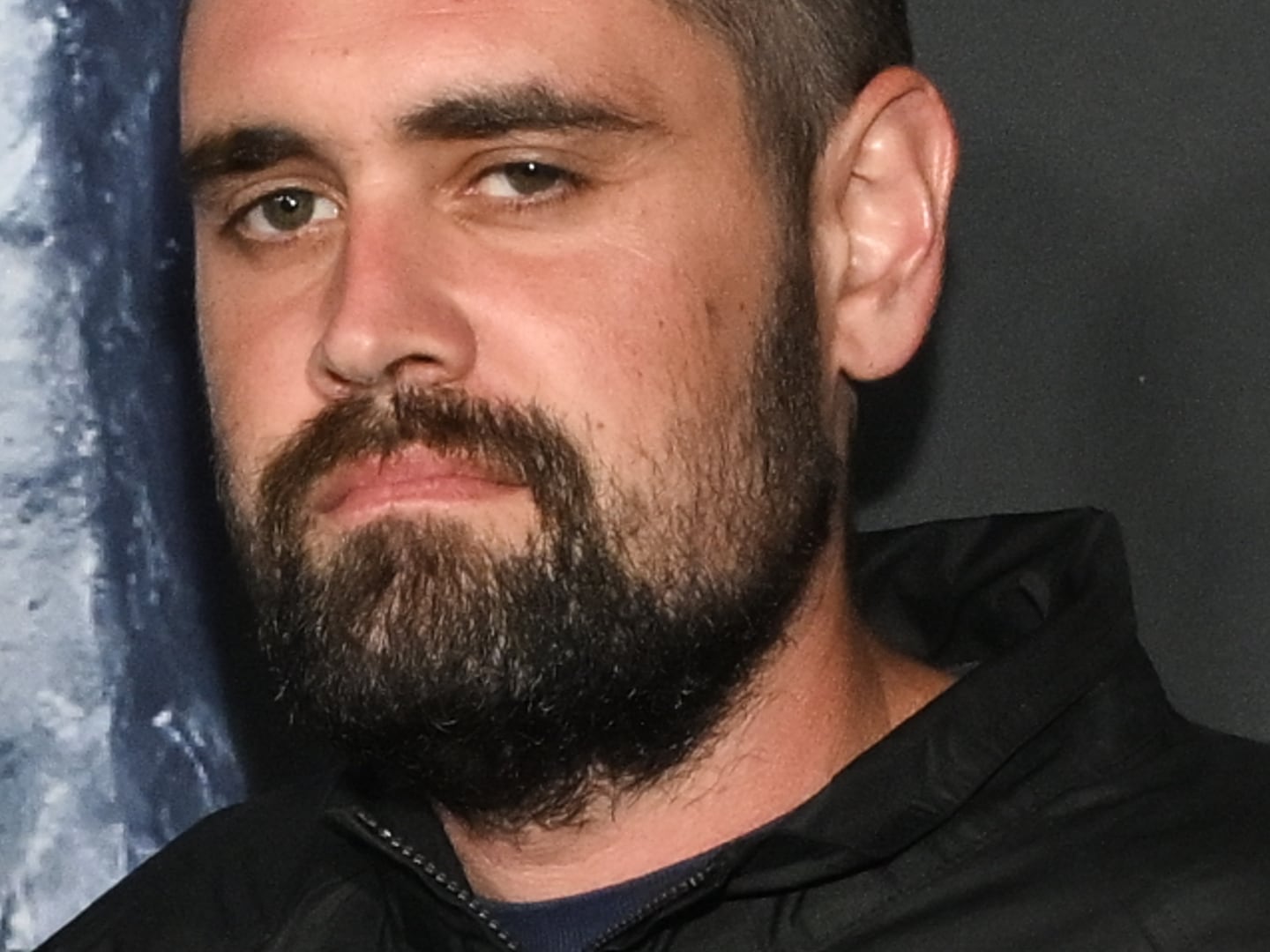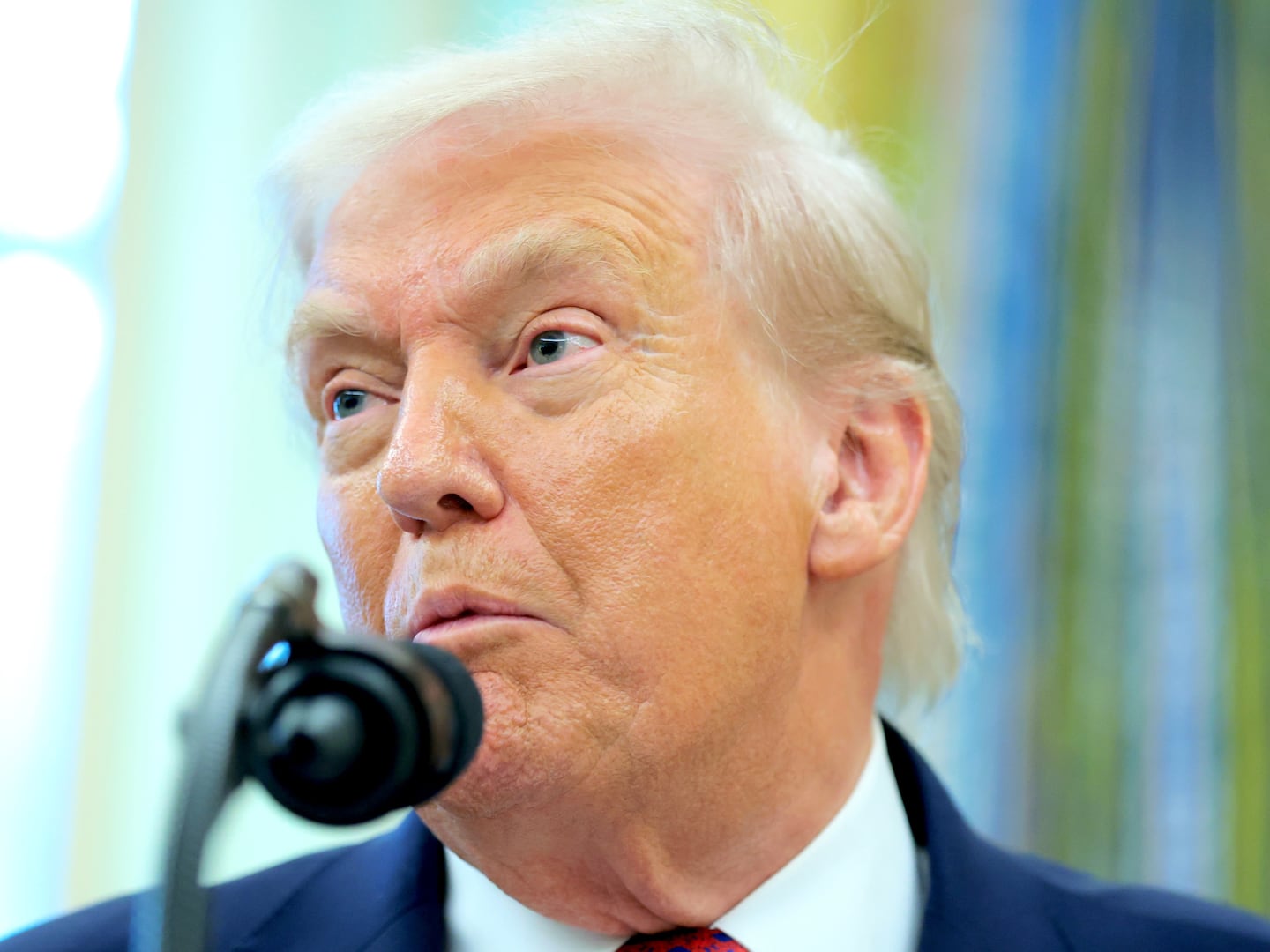A big pink bus—detractors call it “the Pepto bus of death”—is crisscrossing swing states and going from convention to convention, carrying members of Planned Parenthood's pink-shirted young political road team.

At a Columbus, Ohio rally in a park named for the town's first doctor, Lincoln Goodale, who treated the poor at no charge, the staffers stand out because of their pink shirts, but also because of their youth—especially compared to the decades-older counter-protesters they call the “antis” who arrive moments after the bus stops. The pink shirts wield iPhones and cameras to capture the speeches—delivered to the crowd of nearly two hundred people, mostly women—by a rape victim, a new mother who was treated at a Planned Parenthood center for a condition that might have prevented her pregnancy and the group's charismatic president, Cecile Richards.
Nearby, in the grass, about a dozen antis gather, including Bryan Kemper, a well-known figure who's been coming out for decades to protest abortion groups, and members of the Abolitionists Society of Ohio. “We are the generation that will abolish abortion. Peacefully,” says Kemper. He and the others—mostly men, along with two women who coincidentally are also wearing pink shirts—hoist posters showing bloody baby limbs and shout at the rally-goers: “Abortion enslaves women!” and “You tear babies limb from limb!” They aren't filming or tweeting constantly the way pink shirts are—their message is directed entirely at the abortion-rights supporters.
The Planned Parenthood pink shirts edge in front of them, standing between them and the rallygoers, covering the bloody signs with pink ones emblazoned with “Women Are Watching,” with a wide eyeball for the “o.”
“The little baby girls you kill can't watch,” Kemper trills.
But scrolling through the photos of this event posted just after to the Planned Parenthood Action Fund Tumblr devoted to the tour, all you see is pink. There's no sign of the protesters.
Traveling across Ohio with 10 members of the young, mostly single staff—about evenly split between men and women—felt like being part of a political campaign or a social-movement summer camp on wheels. The bus itself felt less like a Greyhound trip than a high-school prom chariot, furnished with string lights, leather captain's chairs, a television, and a kitchenette. Loose M&Ms in bus cup-holders, a stocked snack cabinet, a bottle of whiskey in a drawer, and everyone in the same T-shirt. The staffers, who stayed on institutional message while this reporter was on the bus, exchange inside jokes while they work and wonk out on presidential trivia on their breaks. One communal bathroom in the back means that rule #1 is “No #2.” Others, etched on a dry erase board include “be helpful,” “clean up after yourself” and “don't change the channel during Bachelor Pad.”
The Planned Parenthood Action Fund, which is putting on the bus tour, is the group's political arm, separate from its clinic network. As the bus arrived at events, the guys assembled tents and rally risers while the women passed out T-shirts to canvassers. Everyone devoured press clippings from local papers on the rallies in their states, even early on a Saturday morning.
The 11-state bus tour aims to give supporters moments to rally around in person, and to craft social-media-ready moments at those rallies to connect with other current and could-be supporters and donors online. In the charged election-year environment, that group has grown dramatically with each new Sandra Fluke and Todd Akin. And of course, the road trip is also a way for the group to rally support for the candidates it's backing, all Democrats thus far.
“I've never seen an election where women's issues were such a prominent part of the national debate,” says Richards, who has spent much of her life inside the American political process, including the election of her mother, Ann Richards, to Texas governor in 1990. "Mr. Romney said that he would like [abortion] to just go away. Essentially you would have states where it's safe to be a woman and states where it's not."
Asked if she believes Romney's claim to support a rape or incest exception to the party's anti-abortion platform plank—which mentions no exceptions—she was incredulous.
"When you're running for the presidency of the United States, if you can't even control your own party's platform, why would anyone think you would lift a finger for women once you're president?"
At the GOP convention in Tampa, the pink shirts were the antis in a sense, chanting outside before moving on. At the Democratic convention next week, the groups will not only be let in but Richards will speak, along with Fluke and NARAL president Nancy Keenan.
As calculated strikes and blunders from right-leaning abortion foes have drawn attention to birth control, abortion, and women's health—a spotlight President Obama and other Democrats have been happy to point there—Planned Parenthood has reemerged as a central political player.
Digital specialist Morgan Shoaff says the people who take in the group's online offerings aren't “necessarily the people who use our health centers,” but that both groups are growing. Affiliates treat some 3 million patients each year, delivering gynecological and preventative-care services like breast exams and pap smears. The fastest-growing demographic of visitors to centers, according to Richards, is young men who come for STD or HIV testing. Meantime, Shoaff says, PPAF's digital team has doubled in size since last year.
Sometimes, an outreach strategy “gets pushed to the back burner” to deal with an unforeseen flare-up, like Todd Akin's comment about “legitimate rape,” says the 25-year-old staffer. Had Akin made his comment in 2011, before Planned Parenthood had beefed up its digital team and presence, "we wouldn't have gotten it out there in the same way,” she says. Now they can fire back in real time, and use outrage to raise funds.
After Susan G. Komen for the Cure, the breast-cancer foundation, threatened to defund Planned Parenthood for what insiders claim were political reasons, Planned Parenthood earned back what would have been lost almost immediately, raising $3 million from nearly 80 thousand donors in just four days.
“We're not under the radar anymore,” says field coordinator Emily Jakobsen.
The bus itself is intended to be sure the group maintains and builds on its elevated profile. Shared power cords snake the tables, floors and walls. Two bus booths serve as an editing bay where mini-documentaries telling women's stories at the rallies are cut minutes after they are shot, and it holds a social media HQ where the content is shared on a ++Tumblr++ [http://womenarewatching.tumblr.com ] devoted to the 11-state bus tour. The social-media push is key to the field operation—the moment after staffers return to the bus, it's lit blue from their screens.
Whatever personality is required to relish being photographed in a life-size birth-control-pill-package costume—“Pillamina”—26-year-old Jakobsen has it in spades. The former Obama field organizer is by far the most excited staffer to dole out condoms, designed by Charlotte Ronson and Isaac Mizrahi, to students at Ohio State. She been on the bus for long enough to run out of socks, which she needs because she pairs the costume—sewn by a staffer's mom—with cowboy boots. It's from one of those boots that Pillamina extracts her phone to encourage crowds to text and join the Planned Parenthood supporter list. “Your vote is your voice, vote pro-choice!” chants the pill pack.
This energy does, of course, require substantial fuel, thus our dinner at a Brewsters Cafe in Twinsburg that could accommodate 15 people on short notice and offered peanut-butter cheesecake for dessert. But Ed, an ex-Marine who runs security on the bus, asks the team to remove the pink shirts for dinner as a safety precaution—a reminder of the violence that's been directed at the nation's largest women's-health organization, and also its largest abortion provider.
The next morning, the shirts were back on and the bus team was ahead of schedule. With enthusiasm after a night of drinking and a week on the road that demonstrates the recuperative powers of youth, the team set off for a side trip to an “Obama barn.” Once there, Pillamina leapt in the air in front of the barn, which has the president's 2012 “O” logo painted on its front, reviving a trend from 2008. The group drove an hour to see the barn and take that photo, which nearly 6,000 people have liked, commented on or shared on their Facebook page.
"The most important part of political communication is one on one," says consultant Sarah Flowers, who has worked with Planned Parenthood for years and whose ads helped defeat the personhood ballot initiative in Mississippi last year.
It's only in the last year and a half that Planned Parenthood has wired itself to capitalize on the attacks aimed at it as the campaign season has heated up. The bus team members agree that while Sandra Fluke, the Komen snafu and the Affordable Care Act debate all boosted Planned Parenthood's digital reach, the group's new approach to communication began with the House passing a budget last year that could have defunded their clinics.
“The largest abortion provider in America should not also be the largest recipient of federal funds under Title X. It's time to keep taxpayer money out of the hands of Planned Parenthood,” urged Indiana Representative Mike Pence in February 2011. Planned Parenthood launched an online petition in response, “I Stand With Planned Parenthood,” which 825,000 supporters quickly signed. It became clear that building out digital rapid response could revolutionize the group Margaret Sanger founded in 1921 as the American Birth Control League.
The organization claims 6 million supporters (both on and offline), up from 4 million since the February 2011 Komen funding fiasco.
“We've never been in the spotlight like this before,” says Shoaff, who posted the photo from the February 2012 birth-control hearing showing an all-male committee debating the future of pills they'll never swallow. She added the simple inquiry: “What is wrong with this picture?” Nearly 50,000 people liked, shared, or commented on Facebook.
It sparked a viral moment that the press chewed on for weeks, and Planned Parenthood staffers still get giddy mentioning it—much as they did when Richards joined them on the bus for a short jaunt this past Saturday, and the staff updated her about the most recent moments from the trip they'd shared online.
“The internet is forever,” Richards tells them. And with her team recharged, they set out to keep increasing Planned Parenthood's presence there.

